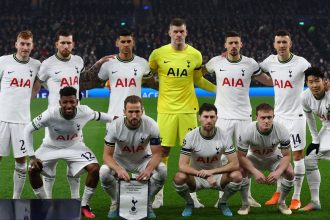da dobrowin: Historic as that victory was, it pales before the scale of achievementof the 1976 triumph
da heads bet: Partab Ramchand07-Nov-2001Part II: Fond memories from Port of SpainSunil Gavaskar’s favourite ground abroad is the Queen’s Park Oval inPort of Spain, for good reason. But then again, why Gavaskar’s alone?It would probably rank among the favourite foreign venues of manyother Indian cricketers too. After all, where else has Indiaregistered two famous Test victories abroad? If the win in 1971 wassignificant and historic, the triumph five years later was, to put itsimply, one of the greatest in the history of Test cricket, verily amiracle.When India took the field on the opening day of the second Test of the1971 series, it was the 25th encounter between the two countries, andIndia had not won any of the previous 24. Indeed, in 23 Tests, Indiahad not even taken the first innings lead and had achieved this featonly in the previous Test at Kingston. Given their infamous recordabroad, the visitors were given little chance of winning the secondTest, but it was reckoned that a draw was not beyond them.
Historic as that victory was, it pales before the scale ofachievement of the 1976 triumph. The third Test of the four-matchseries was to have been played at Georgetown but was shifted to Portof Spain because of incessant rain in Guyana.
The first signs that India could emerge victorious came on the firstday when West Indies were all out for 214. Now the onus was on theIndian batsmen to consolidate the good work done by the bowlers, and a21-year-old debutant named Sunil Gavaskar provided the perfectspringboard with a patient 65. Ashok Mankad came good with a valuable44, and the two put on 68 runs for the first wicket. The in-form DilipSardesai, who had scored a double hundred in the previous Test, thistime got 112 and with Eknath Solkar (55) added 114 runs for the fifthwicket. Despite the Herculean performance of Jack Noreiga, the offspinner who took nine for 95, India obtained a first innings lead of138 runs. But, by scoring 150 for one in their second innings bystumps on the third day, West Indies came back strongly.The match seemed to hang in the balance as the fourth day commenced,but first Salim Durrani and then Srinivas Venkatraghavan got among thewickets. The veteran left-arm spinner dismissed Clive Lloyd andGarfield Sobers (for a duck) in one over, and then the off-spinnerpolished off the tail. West Indies were bowled out for 261, leavingIndia to get only 124 runs for victory. Not wasting any time, theIndians, spearheaded by another fine innings by Gavaskar (67 not out),who capped a memorable debut by hitting the winning boundary, werehome shortly before stumps on the penultimate day for the loss of justthree wickets. It was the sole decisive result of the five-matchrubber, and that is why the 1971 Port of Spain triumph is doublyfamous.Historic as that victory was, it pales before the scale of achievementof the 1976 triumph. The third Test of the four-match series was tohave been played at Georgetown but was shifted to Port of Spainbecause of incessant rain in Guyana. West Indies, already one up inthe series, led off with 359, thanks in the main to a mighty 177 byVivian Richards, then in the midst of the golden run that was to gethim a record 1710 runs during the year.When India were all out for 228, West Indies had all the time in theworld to consolidate, which they did admirably. With AlvinKallicharran getting an unbeaten 103, Lloyd was able to declare at 271for six, midway through the afternoon of the fourth day. This leftIndia a victory target of 403, in the face of which the chase seemedjust a formality. West Indies had ample opportunity to register theirsecond victory of the series which would have given them the rubber and it would have been a Herculean effort for India to even draw thematch. After all, there had been only one precedent in nearly 800 Testmatches of a team scoring over 400 runs to win, and that was in 1948when the Australians, led by Bradman, defeated England at Leeds.However, displaying a positive, never-say-die attitude, the Indianspicked up the gauntlet. Openers Gavaskar and Anshuman Gaekwad, pairedtogether for the first time, put on 69 runs; then Gavaskar andMohinder Amarnath added 108 runs for the second wicket. The dismissalof Gavaskar for 102 at 177 early on the final morning was a majorblow, but Gundappa Viswanath and Amarnath brought the target firmlyinto focus by figuring in a third-wicket association of 159 runs.”India planned their tactics with the perfection of a cricketingLester Piggott, ” Tony Cozier was to write later. Believing that notarget was beyond them, the Indians relentlessly pushed on towardsglory. After Viswanath left, having made 112, Amarnath, who had playedthe sheet anchor role to perfection, and Brijesh Patel carried theIndians to the doorstep of victory before the former was run out for85, made in 442 minutes.By the time he left, though, an unbelievable victory was just roundthe corner, and Patel (49 not out) hastened it with some splendidshots, the winning runs being hit with seven of the 20 mandatory oversstill left. The closing total of 406 for four set a record for thehighest score ever to win a Test match. It still constitutes one ofthe most remarkable victories in Test cricket and, for many, it isstill India’s greatest ever triumph.






